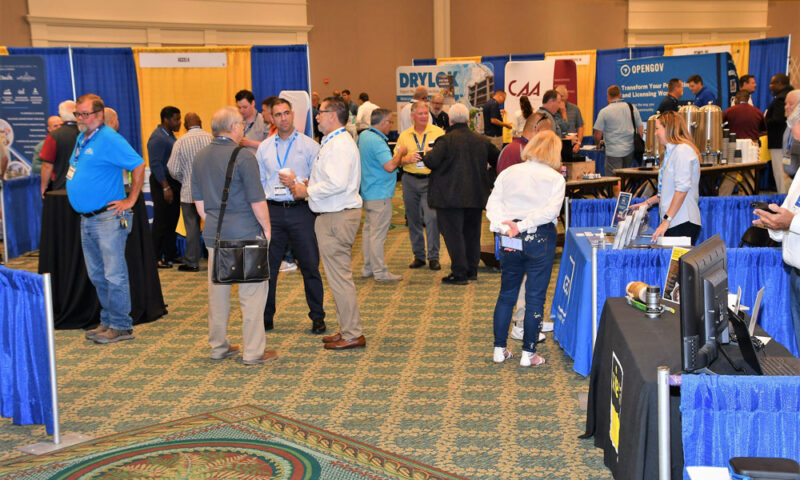
Three Ways to Refresh Your Event Layout
Whether the goal is wider aisles or something more experimental, now is a good time to thoughtfully rethink your event so it works better for everyone.
Event planners already had a bit of a puzzle on their hands even before the pandemic changed the game—after all, trying to navigate aisles, make room for exhibitors, and give people places to interact can be a tall order.
If you can navigate the logistics of an expo hall layout correctly, it can make life a little easier for attendees while giving exhibitors a better chance of success.
While floor plan layout software can help cut down on layout confusion, it can default to ho-hum status quo options. There is some room to make your event layouts more functional or even creative. Here are a few ideas on how to do it.
Embrace the Wagon Wheel
While aisles are tried-and-true and offer a useful navigation approach, trying something new can be a real way to stand out, as Ann Russo, the executive director of the Building Officials Association of Florida (BOAF), recently learned.
During the 2021 and 2022 editions of the group’s annual meeting, BOAF introduced a hub-and-spoke-style “wagon wheel” layout that replaced the aisles with a number of offshoots for exhibits, as well as a centralized common area.
Russo said she had been exposed to the layout idea earlier in her career when she was a membership manager with APCO International—finding it an interesting approach that had the potential to improve interaction. But it wasn’t until the changing climate of the pandemic that she was able to put it into action at BOAF, realizing that since exhibitor demand was going to be low, there was room to get creative.
It also helped that it was a more friendly approach to social distancing.
“We loved the crowded aisle, right? That’s what you want to show your exhibitors when you’re trying to sell the space—yes, your show is packed with people,” she said. “Then, in 2021, we’ve got to work social distancing into the mix.”
While it took a bit to sell the exhibits company on the concept, it proved a big hit with attendees and exhibitors alike, creating a centralized place where attendees could interact with one another, as well as a de facto space for parties and announcements.
“It gave us a nice location for that, where in years past we did these door prize drawings from open space on the floor where we could find it,” Russo said. “This gave us ‘Show Central’.”
So what’s the rub? Simply put, wagon wheel layouts don’t scale when you have larger events at play, because they require larger rooms and more real estate. Because of this, future editions of BOAF’s conference may move back to aisles as exhibitor counts increase—though Russo emphasized she was still hopeful to integrate wagon wheels in some way.
Think in Quadrants
Even if the wagon wheel isn’t the right approach for your organization, you can still learn something from it, specifically the fact that it discourages crowded aisles and puts a premium on breathing room.
So, what if you want to replicate that strategy but don’t necessarily have the space to do a more aggressive approach? Consider the quadrant. By putting four exhibits together in an island-style layout, you can potentially create aisles going in both directions, leading to less of a crush of attendees because not everyone’s moving in the same direction.
“Arranging booths in quads is a great way to avoid congestion because it creates cross aisles,” the event company Ungerboeck notes.
If your event is trying to work in larger, self-contained island exhibits, the approach could prove a natural fit for those larger exhibits as well.
Give Attendees Some Breathing Room
But even if you are still stuck with a more traditional aisle layout, there may still be room to offer a little more flexibility.
Kalahari Resorts & Conventions suggests widening aisles, reducing booth depth, and setting specific directions for people to travel through aisles.
The company notes on its blog that while there may be a need to expand layouts, there is still room to add more flexibility while working in more traditional layouts.
“Designing a show floor to maximize physical distancing is part of the new reality,” the firm stated. “The good news is that not everything needs to completely change!”
If you are thinking about building for additional space, you may want to consider accessibility as well—after all, wide aisles and better signage are just some of the things recommended.
The Building Officials Association of Florida was able to build a space for networking at its recent events with a “wagon wheel” layout. (Ann Russo/BOAF)






Comments